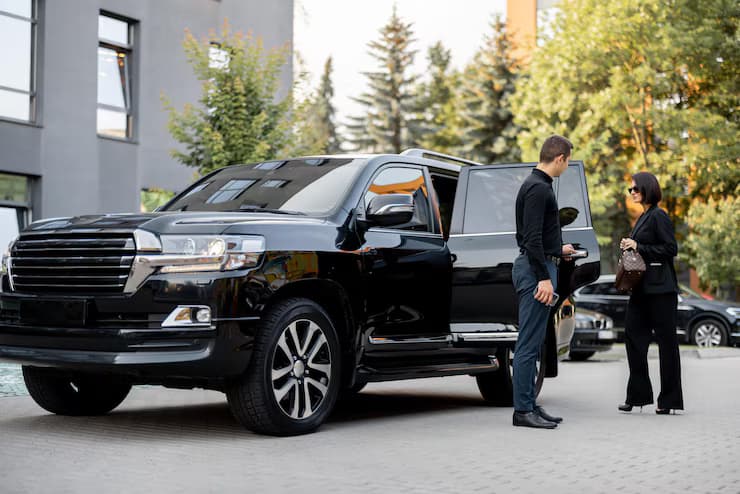 Local SEO Boost – Put Your Business on the Local Map!
Local SEO Boost – Put Your Business on the Local Map!
How to Plan Transportation Inside Yellowstone NP
Written by morganwilley » Updated on: July 02nd, 2025

Yellowstone National Park, renowned for its stunning geothermal features, diverse wildlife, and breathtaking landscapes, attracts millions of visitors each year. With such a vast expanse of natural beauty to explore, planning transportation within the park is crucial for an enjoyable experience. Understanding the various options for Yellowstone NP transportation will help visitors navigate the park efficiently, allowing them to maximize their time and immerse themselves in its wonders. This article provides a comprehensive guide on how to plan transportation inside Yellowstone National Park, covering everything from personal vehicles to shuttle services and guided tours.
Understanding the Park's Layout
The Geography of Yellowstone
Yellowstone National Park spans over 3,400 square miles, making it larger than some countries. Its layout consists of several key areas, including the Old Faithful region, the Grand Canyon of the Yellowstone, Mammoth Hot Springs, and the Lamar Valley, each offering unique attractions and experiences. To explore the park fully, visitors need to familiarize themselves with its geography, including the main roads and points of interest.
The Grand Loop Road is the primary route that connects the park’s major attractions, forming a loop that allows visitors to experience a variety of landscapes and features. Understanding the distances between different locations is essential for planning transportation effectively. For instance, traveling from the West Entrance to Old Faithful can take over an hour, depending on traffic and wildlife sightings. Therefore, having a well-thought-out transportation plan can enhance the overall experience.
Seasonal Considerations
Yellowstone's climate varies significantly throughout the year, impacting transportation options and accessibility. In winter, many roads are closed due to snow, and visitors must rely on snowmobiles, snow coaches, or guided tours to navigate the park. Conversely, during the summer months, all roads are typically open, but the park experiences heavy traffic, especially at popular attractions. Understanding these seasonal factors is vital when planning transportation inside Yellowstone.
Transportation Options Inside Yellowstone
Personal Vehicles
For many visitors, driving their own vehicles is the most convenient way to explore Yellowstone National Park. Personal vehicles offer flexibility, allowing travelers to set their own schedules and explore at their own pace. The Grand Loop Road is accessible by car, and numerous pullouts and parking areas are available at various attractions.
However, it’s essential to arrive early at popular sites to secure parking, particularly during peak seasons. Areas like Old Faithful and the Grand Canyon of the Yellowstone can fill up quickly, and waiting for a parking space can lead to frustration and lost time. Additionally, park regulations require vehicles to stay on designated roads and maintain a safe distance from wildlife.
Shuttle Services
Shuttle services are an excellent alternative for those who prefer not to drive. Some companies operate shuttles that connect various points within the park, providing a convenient way to reach popular attractions without the hassle of parking. These services often include knowledgeable guides who can share insights about the park's history, geology, and wildlife during the journey.
Shuttles can also be beneficial for those staying outside the park, as they provide transportation from nearby towns like West Yellowstone or Gardiner. Planning ahead is necessary, as shuttle schedules can vary, and reservations may be required, especially during the busy summer season.
Guided Tours
For an enriched experience, visitors may consider booking a guided tour. Numerous companies offer guided tours that provide transportation to various highlights within Yellowstone National Park. These tours often include expert guides who can enhance the experience with in-depth knowledge about the park's unique features.
Guided tours can range from half-day excursions to multi-day adventures, allowing visitors to delve deeper into the park's wonders. This option is particularly appealing for those who may not have extensive knowledge of the area or who prefer to leave the logistics to professionals. Additionally, guided tours often include stops at less-traveled areas, providing a more intimate experience with the park's natural beauty.
Biking and Walking
For the more adventurous, biking and walking offer unique ways to experience Yellowstone's stunning landscapes. The park features several bike paths and trails that allow visitors to explore at a leisurely pace while enjoying the fresh air and scenic views. Biking is permitted on designated roads and multi-use trails, providing an opportunity to see the park from a different perspective.
Walking is also a popular option, particularly along the boardwalks around geyser basins and hot springs. These walkways allow visitors to get up close to geothermal features while minimizing environmental impact. However, it’s essential to stay on designated paths to protect the fragile ecosystems within the park.
Wildlife Considerations
When planning transportation within Yellowstone, it's crucial to consider the presence of wildlife. The park is home to various animals, including bison, elk, bears, and wolves, which often roam near roadways. Drivers should remain vigilant and adhere to speed limits to ensure the safety of both themselves and the animals.
Wildlife jams—when animals are spotted near the road, causing traffic to halt—are common occurrences in Yellowstone. Visitors should be prepared for potential delays and factor this into their travel schedules. Additionally, when encountering wildlife, it's essential to maintain a safe distance and avoid approaching or feeding the animals.
Planning Your Transportation Itinerary
Research and Preparation
Before embarking on a trip to Yellowstone, thorough research is vital for effective transportation planning. Visitors should familiarize themselves with the park's layout, including key attractions and access points. Maps of the park, available online or at visitor centers, can provide valuable information regarding road conditions, closures, and points of interest.
Additionally, checking the park's official website for any alerts, updates, or seasonal changes can help travelers stay informed and make necessary adjustments to their transportation plans. This proactive approach ensures a smoother experience upon arrival.
Creating an Itinerary
Once visitors have gathered information about transportation options, they can create a detailed itinerary for their time in Yellowstone. This should include:
Key Attractions: List the must-see locations, such as Old Faithful, Mammoth Hot Springs, and Yellowstone Lake.
Travel Times: Estimate travel times between different points of interest based on the park's layout and expected traffic conditions.
Transportation Method: Decide on the preferred mode of transportation for each segment of the trip, factoring in convenience, cost, and personal preferences.
Flexibility: Allow for flexibility in the itinerary to accommodate unplanned wildlife sightings, extended stops, or changes in weather conditions.
Safety Considerations
Safety should always be a priority when planning transportation within Yellowstone National Park. Visitors should adhere to park regulations, stay on marked roads and trails, and be mindful of wildlife encounters. Additionally, it's essential to be aware of the varying weather conditions, especially in higher elevations where temperatures can fluctuate rapidly.
Travelers should ensure their vehicles are in good working condition, with sufficient fuel, and carry necessary supplies such as water, snacks, and a first-aid kit. For those using shuttles or guided tours, confirming reservations and departure times will help avoid any last-minute complications.
Conclusion
Planning transportation inside Yellowstone National Park is a crucial aspect of ensuring a memorable and enjoyable visit. With numerous options available, from personal vehicles to shuttle services and guided tours, travelers can find a mode of transportation that suits their needs and preferences. Familiarizing oneself with the park's layout, creating a detailed itinerary, and remaining flexible to changes will significantly enhance the experience.
As visitors prepare for their Yellowstone adventure, it's essential to consider reliable transportation options to complement their journey. Bing Mountain Luxury Transportation is here to provide comfortable and convenient services, ensuring your travels are seamless and enjoyable. Don’t hesitate—book your luxurious ride today and embark on an unforgettable exploration of Yellowstone National Park!
Note: IndiBlogHub features both user-submitted and editorial content. We do not verify third-party contributions. Read our Disclaimer and Privacy Policyfor details.
Copyright © 2019-2025 IndiBlogHub.com. All rights reserved. Hosted on DigitalOcean for fast, reliable performance.
















